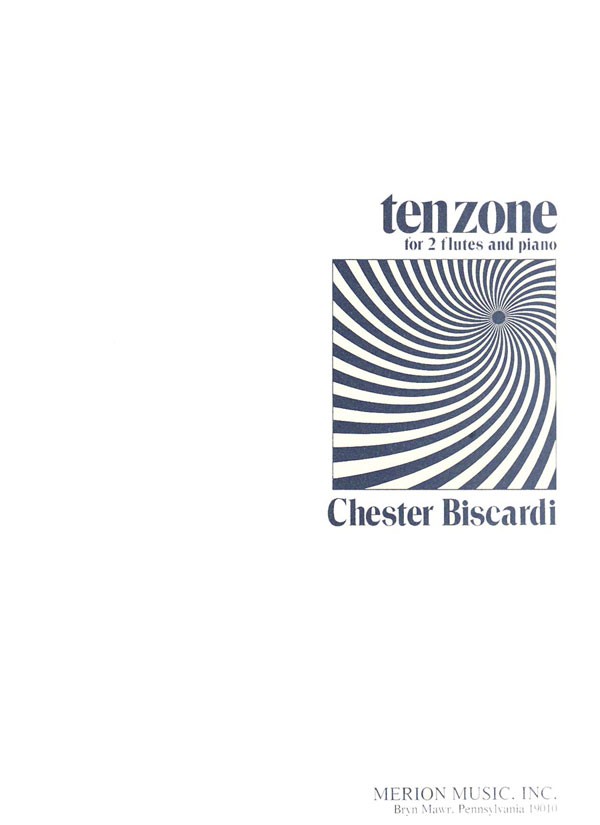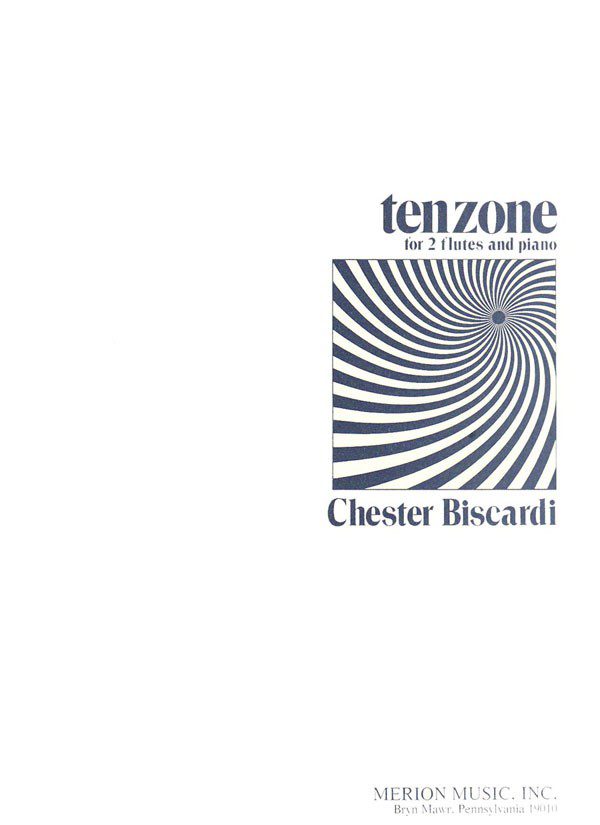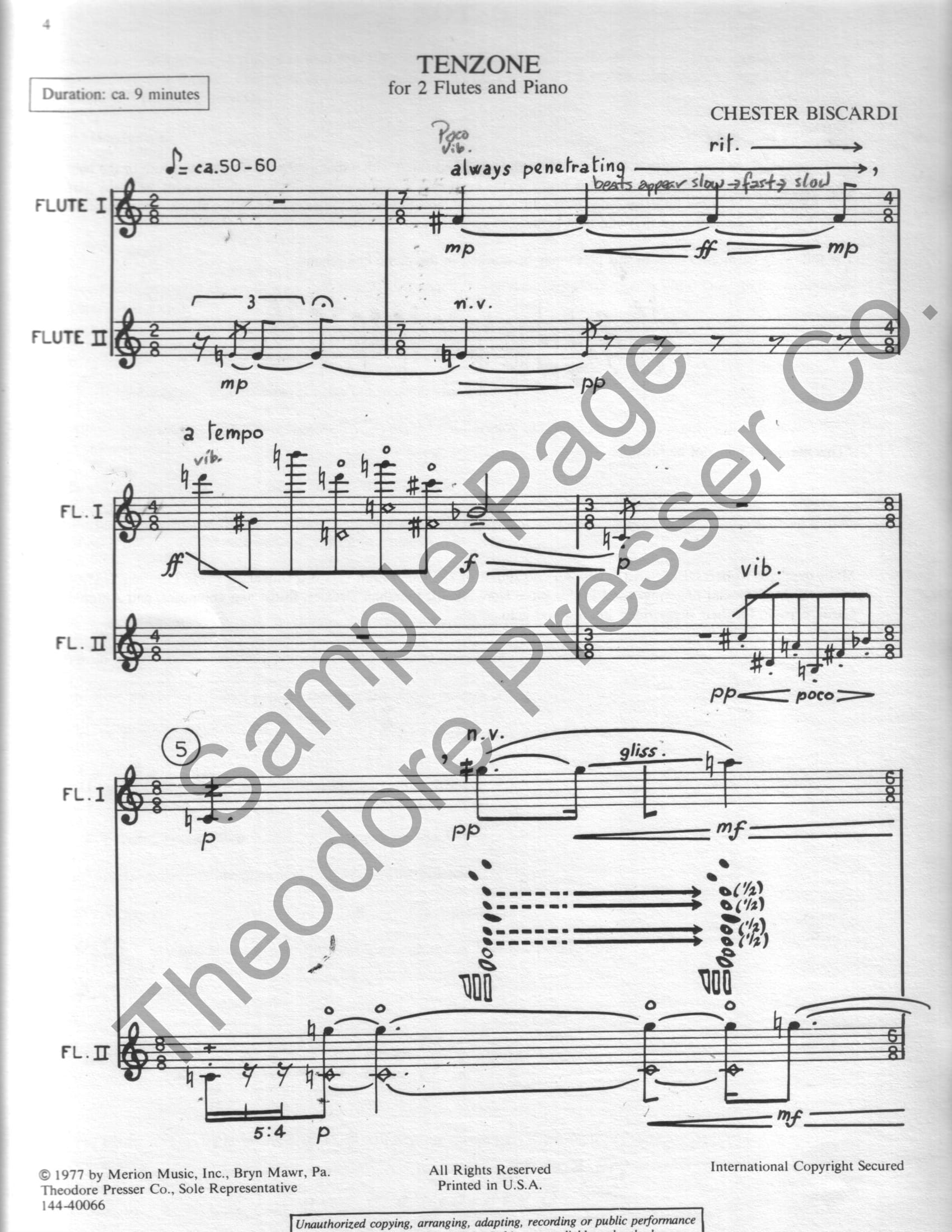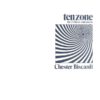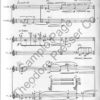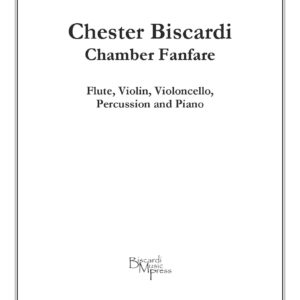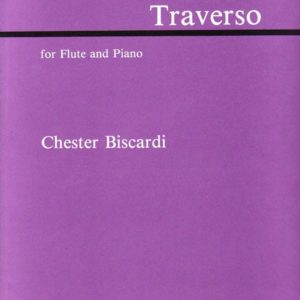Description
Audio
Robert Dick and Keith Underwood, flutes
Robert Weirich, piano
This recording appears on
Chester Biscardi: At the Still Point, New World Records/CRI NWCR686 (New York, 1995) with
Traverso,
The Gift of Life,
Companion Piece (for Morton Feldman),
Incitation to Desire (Tango),
Mestiere, and
At the Still Point. Liner notes by the composer.
Premiere
8 & 11 December 1975
Robert Dick and Keith Underwood, flutes / Chester Biscardi, piano
Sprague Hall, Yale University
New Haven, CT
Dedication
to Toru Takemitsu
Publisher
Merion Music, Inc./Theodore Presser Co. No. 144-40066
Program Notes
A tenzone was a lyric interchange in medieval Italy and Provence (tenson), usually between two poets, concerning topical poetic devices and ideas. This piece itself is a response to the work of Toru Takemitsu, composer, teacher and friend, to whom it is gratefully dedicated. It was first performed by Robert Dick and Keith Underwood, flutes, and Chester Biscardi, piano, at Yale University in 1975 and recorded for CRI with the same flutists and Robert Weirich, piano, in 1979.
Specifically, Tenzone is similar in its lyrical and expressive quality to Takemitsu’s Masque, for two flutes (1959), which is in two parts, Continu and Incidental, both traditionally measured and notated. It differs, however, in its overall construction. It is in one continuous movement, intermixing sections traditionally measured and notated with those "as fast as possible" and unmeasured. It differs also in its subtle use of extended, more recently developed flute techniques that, along with the repetition of tones or cells that establish rich, sonorous centers, create the timbral, harmonic and dramatic motion of the work. A piano was added in order to extend the acoustical range and direct the natural development and flow of the music.
Press
"These pieces [
Tenzone and
Trio] are in one movement and utilize similar sonic vocabulary and coloristic devices. They are strikingly beautiful compositions that employ delicate textural and timbral effects. Structurally they grow from carefully shaped fragments into phrases and longer lyric gestures that relate sectionally."
— Tom Cleman, MLA Notes (1977)
"Chester Biscardi's 'Tenzone' for two flutes and piano (1975) explored the effects of superimposing sustained flute tones of various timbres and texture. It was an absorbing experiment, especially when Mr. Biscardi contrasted the throbbing friction of intervals with the icy concord of intervals of a third."
— Joseph Horowitz, The New York Times (1979)
"
Tenzone for two flutes and piano by Chester Biscardi (Presser/Universal) is a brooding piece, mainly of slow harmonic movement. It uses complex rhythmic figurations and a wide variety of new techniques, including harmonics for all three instruments and multiple sonorities for the flutes. The sections of fast flourishes, whose contrast with the basically slow tempo creates the tension of the title, are tantalizingly short-lived."
— Niall O'Loughlin, The Musical Times (1979)
"
Tenzone, by the young Wisconsin-born composer Chester Biscardi, is a nine-minute work in one movement for two flutes and piano. Dedicated to Toru Takemitsu, with whom Biscardi studied at Yale University, it exudes a Japanese character with its opening very Shakuhachi-like sounds. The cool, static feeling that predominates is interrupted by several unmetered passages marked "as fast as possible," which are especially effective. Notable, too, is the understated role of the piano, whose brief appearances add nice delicacy and texture."
— Connie Nisbet Field, American Music (1983)
"This writer sees Biscardi's
Tenzone as a music of sonorous curves, of neoimpressionism interfacing complex rhythms, plus decorative and elegant timbres. These include a variety of vibratos, key clicks, microtones, and multiphonics, as well as piano harmonics. There is contrastive constancy and there is magnificent sonorous realization.
— Arthur Cohn, The Literature of Chamber Music (1997)
[Of] the three early works . . .
Tenzone (1975) . . . is the most conventional, with elegant sonic strands interweaving between the flutes with periodic interjections from the piano, which acts as more of a guide than a full-fledged participant.
— Robert Carl, Fanfare, The Magazine for Serious Record Collectors (1995)
Tenzone, for two flutes and piano (composed in 1975), is a response to Takemitsu's 1959
Masque, for two flutes. Both it and
At the Still Point, for orchestra and trio (1977), utilize the technique of "frozen registration." Harmonies don't logically flow from one moment to the next, leaving the listener not unpleasantly trapped in a never-ending present tense. Like Debussy, Biscardi uses instrumental timbre and dynamic variation as structural elements.
— William Zagorski, Fanfare, The Magazine for Serious Record Collectors (1995)
Chester Biscardi's affinity for the flute was established in his
Tenzone for two flutes and piano. Given Biscardi's ear for timbre, his careful, caring use of harmonics to veil and unveil pitches, and his extraordinary writing for piano, asking him for a flute and piano work was the natural next step.
Traverso, his NFA-commissioned piece (1987, Young Artist), lives up to the highest expectations. It's a truly significant work that I would love to see move into the core flute and piano repertoire. I've performed it to enormous audience response.
— Robert Dick, The Flutist Quarterly (Winter 2012)


